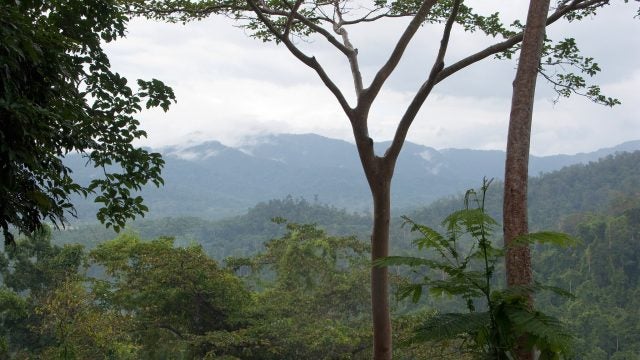
Title: Preventing Genocide within Afghanistan from an Anthropological Framework, with Genocide Watch President Dr. Gregory H. Stanton
The Hazaras, an ethnic minority group in Afghanistan, have been a victim of genocide for over one hundred years. The genocide against them continues under the Taliban. Organizations like Genocide Watch and Amnesty International educate and warn the public about the genocide. Civil society can spread those warnings through churches, synagogues, temples, and other civil organizations. They can influence their governments to act to prevent and stop genocides. In this interview, GJIA sat down with Dr. Gregory Stanton, President of Genocide Watch, to discuss how his Ten Stages of Genocide model can serve as a powerful tool for predicting and preventing genocide.
GJIA: The Ten Stages of Genocide came from your firsthand experience in post-genocide Cambodia and your professional career in the Foreign Service during the 1994 Rwandan Genocide. By drawing parallels between these two crimes and other major atrocities of the twenty-first century, you were able to predict genocide years before killings would begin. Today, the ten stages of genocide is one of the hallmarks of comparative genocide studies. Since you developed the first eight stages in your time at the State Department between 1992 to 1999, the model has since been used to predict genocides and adopt preventive measures. Can you briefly describe the ten stages of genocide?
GS: The ten stages of genocide is a processual model that demonstrates the logic of the genocidal process. The relationships between the “stages” in the genocidal process are not linear. I now regret using the word “stages” because it implies a certain linearity to the model when these processes operate simultaneously and reinforce each other. The model was one that I developed after I lived in Cambodia and saw the results of the Cambodian genocide: graves everywhere and everyone losing family members. I then began to study the evolution of the Cambodian Genocide. I realized that there was a structure to these processes that was also present in the Holocaust, the Armenian genocide, and many others.
GJIA: How did your scholarly work and academic accomplishments help you formulate the ten stages of genocide, and which major global events guided you in creating this framework?
GS: When I began to study the Cambodian genocide, I realized that certain fundamental processes drive genocides. That’s when I started to search for the transformational processes that structurally move societies toward genocide. I first identified these stages in a lecture called “Blue Scarves and Yellow Stars,” which I gave in 1987 at Warren Wilson College. I spoke about classification and symbolization in the Cambodian Genocide and outlined the stages of genocide. I had thought through the fundamental processes that result in genocide by the time I became a Foreign Service officer in the State Department. In fact, Madeleine Albright asked me to go around and talk to the people who made the policies in Rwanda, which she called “our terrible mistakes.”
So I went around and talked to all these folks. Then I wrote a paper titled, “Could the Rwandan Genocide Have Been Prevented?” and in an unclassified version, I published it in the Journal of Genocide Research. Of course, I immediately faced criticism from several people who said, “Oh, we couldn’t have stopped the genocide; it would have taken too long to get our troops there,” which was simply wrong. With top secret codeword clearance, the top clearance at the State Department, I was able to read the cables and find out what had happened. This was kept secret for years, but I knew it, I knew we had thousands of US Marines right off the coast of East Africa at the beginning of that genocide. They could have been flown into Rwanda within a few days.
Those thousands of Marines could have stopped that genocide. My son was a Marine, and I certainly would not try to go up against thousands of US Marines. But that [the presence of the Marines] was kept a secret. Our Peacekeeping Core Group (Susan Rice, George Ward, Sarah Sewall, Prudence Bushnell) knew it too but never said a word about it.
Other nations were capable of rapid response and could have prevented the genocide. Within days, the French and the Belgians sent in over a thousand troops and evacuated their citizens and even their dogs. Neither the Belgians nor the French let a single Rwandan on their planes. If that evacuation was possible, surely, that was a preventable genocide. But it was also preventable because if people had known the warning signs, recognized what genocide was, and understood the stages of genocide, they would have seen that all of these stages were operative long before the genocide began. In that article, I also showed that the Rwandan Genocide, in fact, did follow all of those stages.
The main lesson is that preventive action must be done as soon as you know genocide is coming. Many people talk about early warning. But it has to be really early because it is too late once genocide is already underway. So genocide can be prevented, not inevitable as some claim.
GJIA: Let’s examine a contemporary example of a persecuted population at risk of genocide. The Hazaras are religious and ethnic minorities in Afghanistan, who have been subject to persecution, forced displacement, and genocide for hundreds of years. After the fall of the Afghan government in August 2021, the Hazaras have had their rights stripped by discriminatory Taliban policies. Where do we see them fall within your ten-stage framework of being at risk of possible genocide?
GS: The Hazaras began to be especially afflicted by genocide in the 1890s. Emir Abdur Rahman, known as the “Iron Emir,” was the ruler who unified Afghanistan. When he did that, he slaughtered 60 percent of the Hazaras. If that isn’t genocide, I don’t know what is. And the reason is that the Hazaras are Shia Muslims [Shiites]. They practice a different type of Islam than the Sunnis, who are the majority and include the Pashtuns, the Tajiks, and most other Afghan ethnic groups. The animosity between the Sunnis and the Shia is historical, going back hundreds of years. The Hazaras are considered heretics and apostates by the Sunnis. The Taliban believe the Koran’s order is to “Kill them.” The Taliban cannot tolerate the slightest variation in Islam. They believe that Shia Muslims are heretics and that they should be killed.
The history of genocide against the Hazaras is already there. The Taliban made it very clear when they were in power. Now there’s another group called ISIS-K [also known as ISIS-KP] that claims to be affiliated with ISIS. ISIS-K gets blamed by the Taliban for all the bombings of Hazara mosques, schools, and maternity centers. But ISIS-K and the Taliban are actually in league with each other. Blaming ISIS-K is a very convenient way for the Taliban to escape blame for these massacres. In fact, ISIS-K believes in the same ideology and eliminationist ideology that the Taliban embraces. The Hazaras are already victims of genocide. I would put them at stage nine, extermination.
So what do we do? We’re forming a genocide working group here in Washington, a coalition of many organizations from around the world, including the World Hazara Council. I meet with them regularly. We have also formed an incorporated NGO, the Hazara Collective. For this NGO to work, we’re first going to ask the US Congress to pass a resolution to call it genocide and say we really must not abandon the Hazaras. The US should also give special preference to the Hazaras for U.S. P-2 visas to come to the United States for asylum. Not enough P-2 visas have been given to Hazaras to escape from their persecution.
GJIA: Outside of the international and multilateral solutions for fighting genocide and ensuring the protection of these persecuted groups, there’s also a lot of dialogue about preventing this persecution among Afghani groups. The Hazaras and non-Hazara people are coming together and protesting. How do you feel that individuals should participate in working against genocide, and for those who feel particularly passionate about genocide prevention, how should they influence a large international system with a lot of competing interests?
GS: The most important thing the average individual could do is make the facts public. They can speak about crises and inform themselves about what’s happening. They can speak in their churches, synagogues, and temples. They can, in other words, have programs that inform other people. What we’re talking about here is a mass movement. That’s what we really need.
Amnesty International started a mass movement for human rights, and they have been relatively successful. They have chapters all around the world and millions of members now. They are a huge educational institution about human rights violations. They have taken on torture, the death penalty, and political prisoners. They have become one of the most valuable reporters on human rights violations worldwide. They employ real experts. So does the International Crisis Group. These are ways experts can get involved. These organizations employ people who have studied a country for a long time.
The average person can spread these expert opinions to everyone else. They can write op-eds for their local newspapers. Local newspapers are much more likely to accept an op-ed from someone from that town or from that city than from an outsider. Op-eds are great ways to communicate.
You can organize demonstrations. That’s one of the things the Hazaras did just a few months ago in Washington, DC. They had a huge demonstration here in town, and I spoke at it. There were a hundred and thirty other demonstrations worldwide the same day, which made the Hazaras’ plight public. It was a wonderful day.
Now we need to turn that public attention into Congressional, Presidential, and international action. The Hazaras must not become the latest victims of our abandonment.
…
Dr. Gregory H. Stanton is the founding president and chairman of Genocide Watch. During his time at the U.S. State Department, Dr. Stanton played a key role in drafting United Nations resolutions related to genocide and human rights issues. He previously served as a legal advisor to the Popular Movement of Ukraine (RUKH), the Ukrainian independence movement, where he was named the Ukrainian Congress Committee of America’s 1992 Man of the Year.
Image Credit: Global Security Review
Recommended Articles

Cruises have increasingly become a popular choice for families and solo travelers, with companies like Royal Caribbean International introducing “super-sized” ships with capacity for over seven thousand…

In March 2025, widespread protests erupted across Türkiye following the controversial arrest of former Istanbul Mayor Ekrem İmamoğlu, an action widely condemned as politically motivated and…

In this interview, GJIA sits down with Jojo Mehta, Co-Founder and Chief Executive of Stop Ecocide International, to discuss the global movement to codify ecocide as an international…